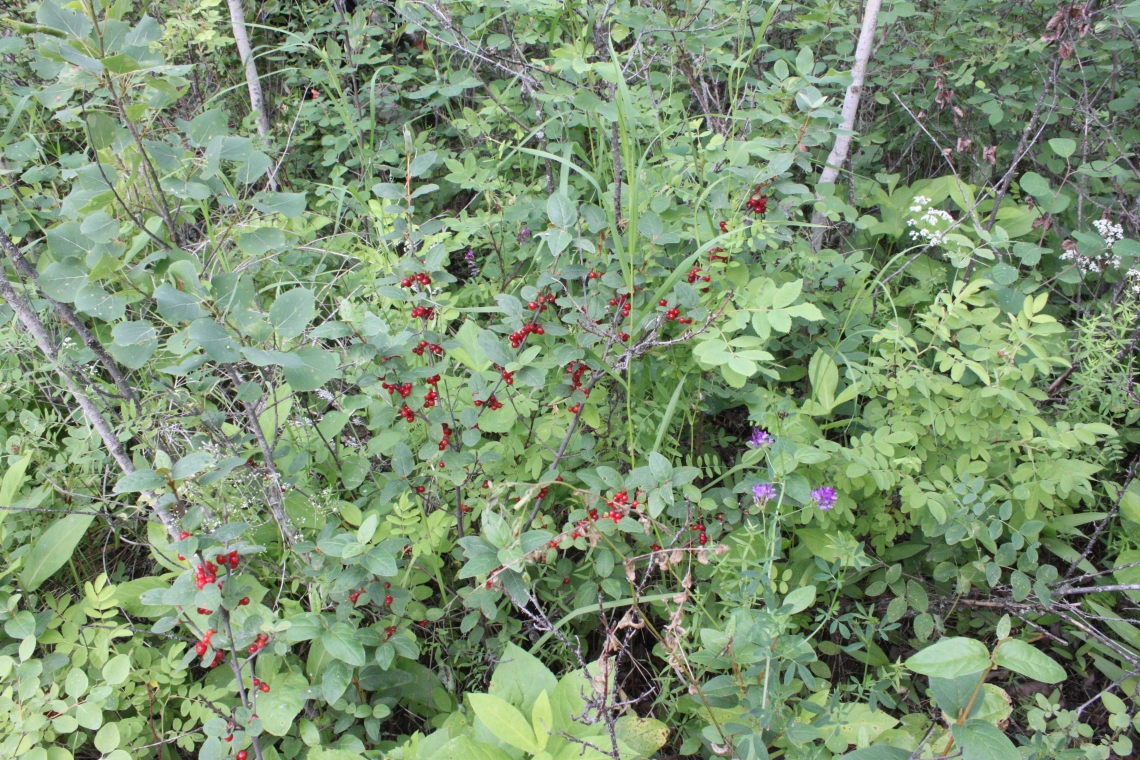
Lately, you may have noticed a large number of species of shrub decorated with bundles of bright red fruit. This is Shepherdia canadensis, or buffaloberry, and July is peak time for production of this important berry. This shrub is found in various boreal forest and aspen parkland forest types, and thrives in areas exposed to full sun making it an excellent pioneer species.
Buffaloberry provides a seasonal flush of food for foraging wildlife, in particular to birds and bears. The berries are edible, however they are quite bitter. Another name for this species is soapberry, as the berries produce and foaming liquid when crushed due to a compound called saponin. Traditionally, the juices of this berry were used to make a whipped cream-like desert as well as a variety of other foods.1
This shrub is also a popular species for use in reclamation as it can establish on a variety of soil types and the ability to fix nitrogen in the soil due to a symbiotic relationship between its roots and a bacteria. Although similar to the seed extraction process of other berries, the foaming nature of the juices requires a few additional steps for extraction, including prior removal of juices using a jelly bag prior to breaking up the berry pulp. The cleaned seed is a dark flattened oval. As a boreal shrub species, Shepherdia canadensis seed enters a dormancy period that must be broken by prolonged cold and frost before the seed will germinate. In a greenhouse this is achieved through simulated stratification processes before the seeds are sown.
For details on how to identify and collect Shepherdia canadensis seed, click here to view the full resource.
1. Johnson D, L Kershaw, A Mackinnon, J Pojar. 1995. Plants of the Western Boreal Forest. Lone Pine Publishing: Edmonton, AB

